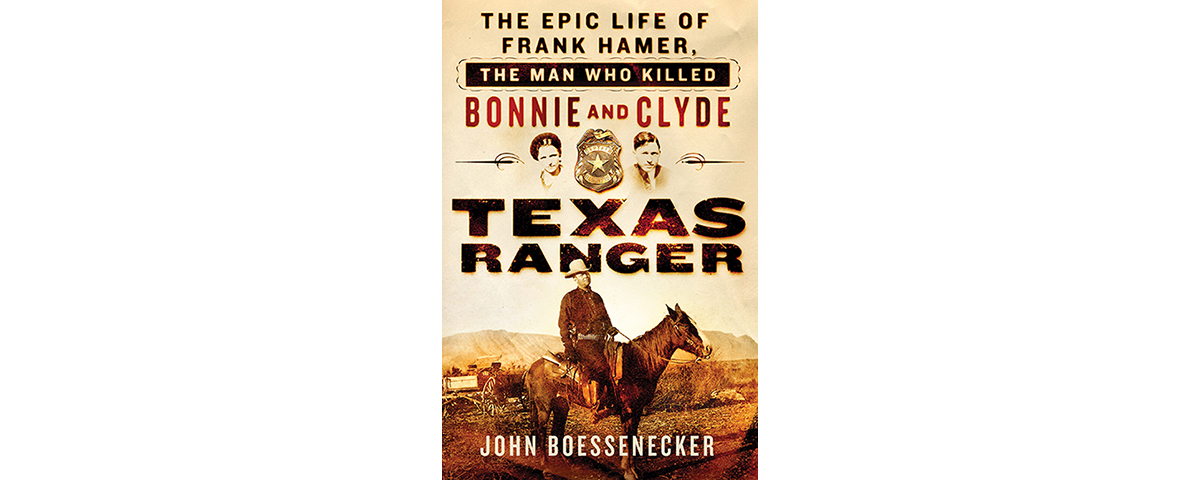Texas Ranger: The Epic Life of Frank Hamer, the Man Who Killed Bonnie and Clyde, by John Boessenecker, Thomas Dunne Books, New York, 2016, $29.99
John Boessenecker, who wrote our April 2016 cover story about Frank Hamer’s first gunfight as a young Texas Ranger, has done justice and then some to this famous Ranger in a 514-page book loaded with detail and insight. There is no escaping the fact that Hamer (born March 17, 1884, in Fairview, Texas) played a central role in the ambush shooting of notorious 1930s bank robbers and killers Bonnie Parker and Clyde Barrow. “In our collective memory, Frank Hamer still remains the man who killed Bonnie and Clyde,” the author writes in conclusion. “Perhaps this book can help restore him to his proper place in the American story.” Boessenecker does his part by boldly exploring the mostly good and some bad of Hamer’s extraordinary (yes, even epic) career from his time as a fearless lawman on horseback through his manhunting and town-taming years both in and out of the Ranger service. Of course, B&C merit mention in the title of the book as well as the cover lines teasing to Boessenecker’s April 2016 feature, but that’s understandable—selling books and magazines is a livelihood. Here the author devotes three chapters to the chase and killing of the notorious couple, which seems about right. But while the gangster aspect is fascinating, it’s only a small part of the exciting and often violent Hamer tale. The lawman engaged in 52 gunfights with desperadoes and was, the author insists in Chapter 1, “the greatest American lawman of the 20th century.”
Modest and humble, Hamer never sought publicity. In particular he didn’t like to discuss Bonnie and Clyde, nor did he capitalize on his role in permanently ending their crime spree. He had regrets about killing Bonnie. “I hate to bust a cap on a woman,” he told one reporter, “especially when she was sitting down. However, if it wouldn’t have been her, it would have been us.” During his 40-year career in law enforcement Hamer went out of his way to shield women and children but was more than willing to take down badmen who needed killing. As he explained to another reporter, he was no gunfighter, though he did shoot at least 23 men, for which Boessenecker dubs him “one of the greatest gunfighters of the American West.” In a rare interview late in life Hamer said that all his killings were in the line of duty, and while he viewed them as an unpleasant duty, his conscience didn’t bother him one bit.
Although Hamer believed in white supremacy in the Jim Crow era, he fought the Ku Klux Klan and saved 15 black men from lynch mobs. And in an era during which crooked police and officials ran rampant in Texas (among many other places), he could not be bought at any price. He opposed bank robbery, of course, but beginning in 1927 he also spoke out against the Texas Bankers Association’s standing reward of $5,000 for every thief killed while robbing a Texas bank. Hamer, who died of a heart attack on July 10, 1955, lost that particular battle. “The reward program,” Boessenecker writes, “remained in effect until 1964, when it was finally withdrawn as a barbaric relic of the Wild West.” Frank Hamer might have been the last of the old breed of Texas Rangers, but something he once said, Boessenecker notes, rings true in modern times: “When our boys are overseas, they are fighting for the safety of their country and people. Likewise, peace officers fight for the safety of the public. Yet if they have to kill a man in the line of duty, they are usually criticized severely by the people they are defending.”
—Editor





